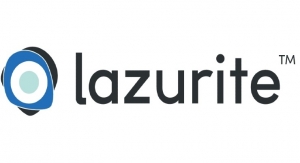Steve Maylish and Nick Rakhshani, Chief Commercial Officer, Fusion Biotec; Chief Marketing Officer, Satoba Technology Marketing01.30.17
In the past (and, to a large degree, today), medical device companies focused on selling products to healthcare providers and payers. However, as healthcare moves away from a reactionary, fee-based care model to health and wellness or value-based models, more focus is now on the consumer/patient. Payers are realizing that reimbursement for fees, tests, and visits add cost to an already overburdened system. Over time, prevention is less expensive than treating an acute or chronic condition. This has led payers to reimburse for better patient care and deny payment or penalize for hospital-acquired conditions. In addition, many medical device users today consider themselves consumers, not patients.
In 2017, the emphasis will continue to shift from provider-focused to patient-focused healthcare. No matter what happens to the Affordable Care Act, the current trend is toward consumer choice (health insurance competition), consumer empowerment (health savings accounts), and consumer wellness. Today more than ever, digital healthcare, the Internet of Things, value-based care, and healthcare reform are converging to drive the consumerization of healthcare.
What improves patient outcomes and adds value? Does a smartphone application really change consumer habits? Can hospital readmission rates be impacted or infection rates reduced? As the cost burden shifts, consumers are enjoying more focus while healthcare providers and devices are subject to more scrutiny. As this trend continues, medical device designers will need to shift their focus as well.
Unfortunately, patient outcome data is costly to generate and can sometimes require years of clinical work after a product launches. Determining product value and likelihood of improved outcomes early can be invaluable. Incorporating this knowledge into the innovation phase can ensure product acceptance. But today, most companies try to accomplish this by learning more about the customer, rather than the “job” that needs to be done.
Clayton Christensen, best-selling author of “The Innovator’s Dilemma,” just released a new book titled, “Competing Against Luck” as a resource to help improve product design. To innovate, Christensen teaches that one must first discover what job consumers are hiring a product to do. This is then translated into a job specification: “What do I need in my new product, so that it does the consumer’s job well?” And finally, a company’s capabilities must be integrated in order to “nail the job consistently.” For medical products, the job of improving patient outcomes translates as the immediate result from a product or service and long-term benefit. In short, how well does the device do the intended job?
As consumers take more control of their health, existing models are bound to change. For all Theranos and Elizabeth Holmes did wrong, they did have their business model right. What they didn’t have was technology to back up their claims. Theranos states on its website, “We are developing technologies that will enable us to make it possible for more people, in more places, to get the laboratory tests they need.” This shift to a consumer-centric model (i.e., small blood draw, convenient access at a local retail clinic, transparent online pricing, and no doctor visit) is at the heart of the company’s business model—and it is not alone in this pursuit. More companies are realizing that healthcare is shifting toward consumers, a classic case of “disruptive innovation.” As proof, in 2016, digital healthcare investment reached an all-time high of more than $6.5 billion.
So how does a medical company create consumer-centric, disruptive innovation?
It’s exciting to improve one’s quality of life, but as Theranos knows, there are risks involved in product innovation and disrupting existing models. Medical device development is a highly technical and costly undertaking. Marketing and development teams understand how data and analytics can drive decision-making. One of the unfortunate ideas resulting from data and customer analytics, however, is that to develop new products, we need to learn more “about” the customer.
This need for customer or user data is more acute in medical design, where the product is submitted for approval to the U.S. Food and Drug Administration (FDA). In the submission, the FDA requires usability engineering reports. Usability engineering requires a focus on user profiles, use environment, and user interface. The idea is to identify use-related hazards, mitigate them, and validate safety and effectiveness. This human factors validation testing analyzes how the user interacts with the newly designed product and looks to reduce user-related errors.
More customer data tells designers more about the customer, but very little about the actual job customers want done. It turns out that one of the best strategies for creating new products is a process called “jobs to be done.” This method of creating new and disruptive products was developed by Christensen, a professor at the Harvard Business School (HBS). Christensen observes that there are four reasons why customer information is a misguided path to innovation:
A recent study by Michael Devonas (affiliated with the Clayton Christensen Institute) titled, “For hire: Your neighborhood retail clinic,” is a great example of the “job to be done” concept in the new consumer-centric healthcare industry. It determined why a patient decided to visit a local retail pharmacy instead of the hospital emergency room (ER). The retail clinic, the study concluded, will become part of the eventual consumer-centric healthcare shift, and this transition will entail understanding the “job to be done.”
The research interview of the patient revealed the following:
According to Devonas, the “job to be done” in this case was “Make the decision for me about whether to take a more aggressive treatment strategy for my condition, but don’t make an unnecessarily big deal of it.”
The “job to be done” approach is instrumental in framing decision-making and providing solutions about human behavior. In this framework, consumers have a specific “job” that needs to be accomplished. They make a choice among tools “hired” to solve their problem. As Abraham Maslow once famously said, “If the only tool you have is a hammer, you tend to see every problem as a nail.” Therefore, the “job to be done” concept can help uncover the misunderstood causes of why consumers make decisions. In this situation, the patient was looking for a less stressful way to decide on a trip to the ER. Traditional marketing at a diagnostic instrument company may have concluded this was a decision to utilize a cheaper, easier manner of diagnosis.
Because “job to be done” theory concentrates on a deeper understanding of the job and not the customer, it provides more useful information about the task and the experience. A product or service that takes consumers’ habits and anxieties into account can disrupt existing norms. Focusing only on customer profiles can obscure why a consumer makes a choice to “hire” a product to complete a job. The “job to be done” theory can, in turn, help engineers and marketers design products that provide more value and better patient outcomes.
Steve Maylish has been part of the medical device community for more than 30 years. He is currently chief commercial officer for Fusion Biotec, an Irvine, Calif.-based contract engineering firm that brings together art, science, and engineering to create medical devices. Early in his career, Maylish held positions at Fortune 100 corporations such as Johnson & Johnson, Shiley, Sorin Group, Baxter Healthcare, and Edwards Lifesciences.
Nick Rakhshani is a marketer with a passion to help entrepreneurs, startups, and businesses multiply sales. He authored “Hyper Engaging Sales Funnels” a four-step framework for multiplying sales at scale. Rakhshani has more than 25 years of experience working with companies across a broad spectrum of industries.
In 2017, the emphasis will continue to shift from provider-focused to patient-focused healthcare. No matter what happens to the Affordable Care Act, the current trend is toward consumer choice (health insurance competition), consumer empowerment (health savings accounts), and consumer wellness. Today more than ever, digital healthcare, the Internet of Things, value-based care, and healthcare reform are converging to drive the consumerization of healthcare.
What improves patient outcomes and adds value? Does a smartphone application really change consumer habits? Can hospital readmission rates be impacted or infection rates reduced? As the cost burden shifts, consumers are enjoying more focus while healthcare providers and devices are subject to more scrutiny. As this trend continues, medical device designers will need to shift their focus as well.
Unfortunately, patient outcome data is costly to generate and can sometimes require years of clinical work after a product launches. Determining product value and likelihood of improved outcomes early can be invaluable. Incorporating this knowledge into the innovation phase can ensure product acceptance. But today, most companies try to accomplish this by learning more about the customer, rather than the “job” that needs to be done.
Clayton Christensen, best-selling author of “The Innovator’s Dilemma,” just released a new book titled, “Competing Against Luck” as a resource to help improve product design. To innovate, Christensen teaches that one must first discover what job consumers are hiring a product to do. This is then translated into a job specification: “What do I need in my new product, so that it does the consumer’s job well?” And finally, a company’s capabilities must be integrated in order to “nail the job consistently.” For medical products, the job of improving patient outcomes translates as the immediate result from a product or service and long-term benefit. In short, how well does the device do the intended job?
As consumers take more control of their health, existing models are bound to change. For all Theranos and Elizabeth Holmes did wrong, they did have their business model right. What they didn’t have was technology to back up their claims. Theranos states on its website, “We are developing technologies that will enable us to make it possible for more people, in more places, to get the laboratory tests they need.” This shift to a consumer-centric model (i.e., small blood draw, convenient access at a local retail clinic, transparent online pricing, and no doctor visit) is at the heart of the company’s business model—and it is not alone in this pursuit. More companies are realizing that healthcare is shifting toward consumers, a classic case of “disruptive innovation.” As proof, in 2016, digital healthcare investment reached an all-time high of more than $6.5 billion.
So how does a medical company create consumer-centric, disruptive innovation?
It’s exciting to improve one’s quality of life, but as Theranos knows, there are risks involved in product innovation and disrupting existing models. Medical device development is a highly technical and costly undertaking. Marketing and development teams understand how data and analytics can drive decision-making. One of the unfortunate ideas resulting from data and customer analytics, however, is that to develop new products, we need to learn more “about” the customer.
This need for customer or user data is more acute in medical design, where the product is submitted for approval to the U.S. Food and Drug Administration (FDA). In the submission, the FDA requires usability engineering reports. Usability engineering requires a focus on user profiles, use environment, and user interface. The idea is to identify use-related hazards, mitigate them, and validate safety and effectiveness. This human factors validation testing analyzes how the user interacts with the newly designed product and looks to reduce user-related errors.
More customer data tells designers more about the customer, but very little about the actual job customers want done. It turns out that one of the best strategies for creating new products is a process called “jobs to be done.” This method of creating new and disruptive products was developed by Christensen, a professor at the Harvard Business School (HBS). Christensen observes that there are four reasons why customer information is a misguided path to innovation:
- Customer data shows only correlations and patterns.
- Customer data doesn’t reflect the experience of the customer and the job to be done.
- Companies have become comfortable in using data to make innovation decisions.
- Most data in market research is of the “correct” kind instead of the “true” kind.
- The job is more than a task; it is an experience.
- Circumstances are more important than data and product features.
- Innovators solve problems that have less than satisfactory solutions.
- Jobs are more than just functions. They also include emotional and relational dimensions.
- Get a deep understanding of the job itself.
- Create the right experience for the purchase and use of the product.
- Develop a process across your business to support the job-to-be-done strategy.
- Observe tasks and jobs people would rather avoid.
A recent study by Michael Devonas (affiliated with the Clayton Christensen Institute) titled, “For hire: Your neighborhood retail clinic,” is a great example of the “job to be done” concept in the new consumer-centric healthcare industry. It determined why a patient decided to visit a local retail pharmacy instead of the hospital emergency room (ER). The retail clinic, the study concluded, will become part of the eventual consumer-centric healthcare shift, and this transition will entail understanding the “job to be done.”
The research interview of the patient revealed the following:
- The patient was experiencing sharp pain in her stomach. It was not the first time she had experienced this particular symptom—it had happened three or four times before. The pain had subsided quickly in the past, but this time persisted and stayed constant throughout the day. Eventually, someone told her she looked sick.
- Instead of dealing with the problem, she avoided it and hoped it would abate—it had gone away in the past. When it didn’t subside, and her ability to function socially was compromised, she called to check the neighborhood retail clinic’s availability. She made a conscious decision to avoid the ER because a good friend had recently ended up “trapped” in the waiting room for a week. This made her unwilling to experience the same frustration unless absolutely necessary.
- The patient decided although she had never been to a retail clinic, it could help her decide whether or not to visit the ER. The patient was not worried about the cost of either, because she had good insurance. Her main reason for avoiding the ER was anxiety based on experiences of people close to her.
- She found that the retail clinic wasn’t dramatic, and was also less stressful. Its low cost was not a factor, but the ability to triage her problem without frustration was. Other interviews conducted with patients who opted to visit retail clinics instead of the ER showed common patterns. One of these was avoidance of stressful situations, like talking to seemingly extraneous people about a condition. The retail clinic, on the other hand, provided simple sign in via computer.
According to Devonas, the “job to be done” in this case was “Make the decision for me about whether to take a more aggressive treatment strategy for my condition, but don’t make an unnecessarily big deal of it.”
The “job to be done” approach is instrumental in framing decision-making and providing solutions about human behavior. In this framework, consumers have a specific “job” that needs to be accomplished. They make a choice among tools “hired” to solve their problem. As Abraham Maslow once famously said, “If the only tool you have is a hammer, you tend to see every problem as a nail.” Therefore, the “job to be done” concept can help uncover the misunderstood causes of why consumers make decisions. In this situation, the patient was looking for a less stressful way to decide on a trip to the ER. Traditional marketing at a diagnostic instrument company may have concluded this was a decision to utilize a cheaper, easier manner of diagnosis.
Because “job to be done” theory concentrates on a deeper understanding of the job and not the customer, it provides more useful information about the task and the experience. A product or service that takes consumers’ habits and anxieties into account can disrupt existing norms. Focusing only on customer profiles can obscure why a consumer makes a choice to “hire” a product to complete a job. The “job to be done” theory can, in turn, help engineers and marketers design products that provide more value and better patient outcomes.
Steve Maylish has been part of the medical device community for more than 30 years. He is currently chief commercial officer for Fusion Biotec, an Irvine, Calif.-based contract engineering firm that brings together art, science, and engineering to create medical devices. Early in his career, Maylish held positions at Fortune 100 corporations such as Johnson & Johnson, Shiley, Sorin Group, Baxter Healthcare, and Edwards Lifesciences.
Nick Rakhshani is a marketer with a passion to help entrepreneurs, startups, and businesses multiply sales. He authored “Hyper Engaging Sales Funnels” a four-step framework for multiplying sales at scale. Rakhshani has more than 25 years of experience working with companies across a broad spectrum of industries.




























